STREAM
FOR STUDENTS BY STUDENTS






Changesandevents youmighthavemissed
23rd:TaylorSwift’sfirstconcertinSydneyforthe ErasTour.

21stTheLyridmeteorshowerpeaked

09th:SnapFrenchelectionhappens
29th:KingCharlesdiagnosedwithcancer
6thUkraineinvadesRussiainfirstground incursionoftheconflict.
3rdNikkiHaleywinsherfirstandonlyRepublican primaryinWashingtonD.C

6th:MetGalaoccurswiththethemeofSleeping Beauties:ReawakeningFashion.
11th:EurovisionSongContestinMalmoSweden, withSwitzerlandwinning
7th:1styearanniversaryofthe onsetofthe Israel&Hamasconflict.
24th:Riverside’s90thAnniversary 9th:HurricaneMiltonhitsFlorida
21st:Bidendropsoutofpresidentialelection
26th:SummerOlympicsinParis
27th:AcclaimedHarryPotteractress,Maggie Smith,diesat89
NOVEMBER USPresidentialElection
FifaWorldCuptakesplaceintheUS NASA’sArtemisIImission-thefirsttothemoonsince1972
Windows10nolongeroperating BulgariawilljointheEuropeanUnion
A Letter From the Principal
It gives me great pleasure to compose this foreword for The Stream. The Stream is a compilation of student writing, initiated by a group of passionate student writers and coordinated by Mr Zabakly. It is a wonderful whole school activity that has, for three years now, provided a forum for young people who have ideas and who wish to express them in writing, in any subject or genre they choose. This is the third edition of The Stream and it is extra special as it coincides with our 90th year anniversary.
Literacy underpins all that we do at Riverside, and in life. The Stream provides a genuine learning opportunity for all students, 7-12, to develop their creativity and communication in collaboration with like-minded students who are keen to come together weekly, or more often, to share their passion for expressing themselves through the craft of writing.
We are very lucky to have this outlet for our young writers and it is, indeed, a true testament to the commitment and dedication of the Stream writers and their teacher, Mr Zabakly, for the copious hours that they spend together creating this literary piece (most definitely a masterpiece in our eyes).
Kudos to Mr Zabakly for bringing this group together in such a cohesive, consistent way and for making this idea work. Credit to the talented writers who have crafted and finessed these literary works – they are as interesting as they are diverse. A true representation of the creativity and talent we nurture and nourish at Riverside. I hope you enjoy reading this product of our passionate, talented writers at Riverside, as much as I did.
Riverside Girls High School Principal
Louise McNeil

Comments from The Team
This has been an amazing year for school writing at The Stream. Whilst we had many of our most committed contributors graduate and complete their HSC, we have also had new students take on the mantle of leadership. I hope you enjoy the magazine this year as much as our student writers and editors have enjoyed putting it together! Jason Zabakly - Facilitating Teacher
I think being part of the school magazine allows you to express your creativity, build up writing and leadership skills and contribute to the school community. It’s a unique opportunity to create something meaningful that represents your peers and the school. I strongly encourage others to join the school magazine, as it's a great way to develop and contribute something to the school. Zi Kei Au
To share news, history and knowledge to Riversidians so we can all be informed about the world in which we live. Roza Azarbayjan its nice to be involved in the school community and i think its a cool way to express your ideas that you wanna share with everyone in school. Anna Chan
It is important to involve yourself in the school magazine to express your interests, and communicate ideas to the rest of the school. By participating in the magazine, you improve your writing skills and ability to work collaboratively and share ideas, whilst working hard on creating something based on a topic of your interest to present to the whole school. Holly Coloma
I think it's important to be involved in the school magazine because it helps you improve your writing skills and you get to research a range of things depending on articles that you get to write, or even if you're not researching it can be very interesting to hear other people's opinions on certain subjects. You also get to help other people (magazine readers) hear information or other people's opinions on certain subjects, and it's nice to be a part of why they get to hear all these interesting things. Isabela Mercer-Martinez


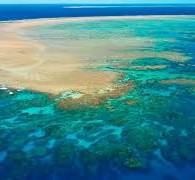


AN ENDANGERED ECOSYSTEM
By Zi Kei
The Great Barrier Reef is located in the Coral Sea, on Australia's north-eastern coast. It stretches more than 2,300km along Queensland's coastline, beginning at the tip of Cape York Peninsula in the north and extending down to Bundaberg in the south. Australia’s well-known coral reef is famous for its remarkable variety of natural living organisms; it contains the world's largest collection of coral reefs, with 400 types of coral, 1,500 species of fish and 4,000 types of molluscs. However, this unique and vital ecosystem faces a growing threat as it is rapidly becoming one of the most endangered ecosystems on the planet due to the changing climate and environment within and around it.
The Importance of The Great Barrier Reef
The Great Barrier Reef is more than just a visual spectacle; it is an intricate ecosystem supporting many lives. Its coral structures are the foundation for the entire reef system. Tiny organisms, known as coral polyps, create protective calcium carbonate shells, which form intricate and colourful reefs over time. These structures provide a home for countless species, from small invertebrates to large predators such as sharks and stingrays. Moreover, the reef is crucial to the survival of endangered species like dugongs and sea turtles. Dugongs rely on seagrass beds in the reef for food, while sea turtles depend on the reef for feeding and nesting. As the reef declines, these species face increasing threats, as the loss of coral and seagrass disrupts their natural habitats, pushing them closer to extinction. This highlights the importance of preserving this unique ecosystem.
Climate change poses the most pressing threat to the Great Barrier Reef. Rising ocean temperatures have led to frequent coral bleaching events, where stressed corals expel the symbiotic algae (zooxanthellae) from their tissues, giving them their unique, vibrant colour. This is called coral bleaching.
IMPORTANT: Bleached coral is not dead, but it is weakened. Prolonged exposure to higher temperatures can lead to death. The reef experienced severe bleaching events in 2016, 2017 and 2020, with significant portions of coral damaged or destroyed. The reef’s ability to recover from these events is declining, as global temperatures continue to rise. Additionally, ocean acidification, another consequence of increased carbon dioxide levels in the atmosphere, affects the reef's growth and structure. Acidic waters make it harder for corals to build their calcium carbonate skeletons, weakening the reef’s resilience.
AN ENDANGERED ECOSYSTEM
By Zi Kei
Beyond climate change, human activities exacerbate the reef's fragility. Pollution from agricultural waste flow, industrial waste, plastic debris and so many more infiltrates the marine ecosystem, damaging coral and poisoning marine life. Coastal development near the reef disrupts natural processes and destroys habitats, while overfishing reduces the populations of species that help maintain the reef’s ecological balance.
Tourism, while economically beneficial, also poses risks. Millions of tourists visit the reef annually, if not properly managed, this can lead to physical damage to the coral from boat anchors, pollution and unsustainable practices like reef walking and irresponsible diving.
The urgent need to protect the Great Barrier Reef is recognised by the Australian government, environmental organisations and global bodies, such as The Great Barrier Reef Marine Park Authority (an independent Australian Government agency) and UNESCO World Heritage Centre. Conservation efforts are focused on reducing local impacts through stricter fishing regulations, cutting pollution with sustainable farming and creating no-fishing zones to protect marine habitats.
On a larger scale, tackling climate change is crucial for the reef’s survival. The Paris Agreement (a legally binding international treaty on climate change), aims to limit global temperature rise. This is a positive step, but more tangible actions to reduce carbon emissions and promote renewable energy are still needed.
In addition, scientists are exploring innovative methods to save the reef. Coral restoration projects aim to grow heat-resistant coral strains, while reef regeneration efforts focus on transplanting nursery-grown coral back into damaged areas. Efforts to regenerate damaged sections of the reef by transplanting coral grown in nurseries back into affected areas offer a glimmer of hope, but they require significant resources and commitment to make a lasting impact.
The Future of the Great Barrier Reef… is unknown to us… But we know that The Great Barrier Reef's future is at risk, with rising temperatures, pollution and human activities increasing its vulnerability. Protecting it is crucial not only for its beauty but for the biodiversity and ecological balance it supports. Without urgent action, this natural wonder and its countless species could be not lost but gone. Act now to preserve the reef before it's too late.



Year 9 Gothic Literature

The year 9 Creative Writing Task required students to compose an imaginative response reflecting knowledge of the Gothic and/or Speculative Fiction genres as well as aspects of their chosen stimulus image.

Ella's short story skilfully integrates distinctive gothic elements and compelling symbolism and motifs to represent the destructive nature of love and how this can lead to torment and tragedy.

Charlotte has also penned an evocative piece that demonstrates her knowledge of the gothic genre through imagery and figurative devices to explore haunting and inescapable realities of the past and present.
MISSED STORIES ABOUT THE OLYMPICS-
POOP PROTEST IN THE SEINE
Parisians are threatening to poop in the Seine in response to Paris’s overspending for the river’s cleanup, as well as multiple other problems they are upset about, such as the strain the Olympics could put on Public transport, the security risks, and at President Emmanuel Macron for allowing the rise of the far-right National Rally party in France They are mostly angered that the Paris city officials have spent billions of dollars on cleaning up the Seine, but that money could’ve been used for numerous other things of more importance
There has been a website set up supposedly by an anonymous computer programmer, who according to French media, is not only angry at the cost of the Seine’s cleanup, but at President Macron’s failure to address inequality, poverty and community tensions, as well as the fact that the money spent on the cleanup could’ve been used to help people who are going through tough times, and who need it more They told Actu Paris, a Parisian news program, "The problem is that all the resources that have been invested have not been to resolve all the social problems we have at the moment
We have the feeling of being abandoned We see where their priority was."
When the Paris mayor and president of France announced that to cease the ongoing concern about the river’s safety, they were going to go for a swim in the Seine on the 23rd of June, the later viral hashtag‘ #JeChieDansLaSeineL e23Juin’, which translates directly to ‘I s*** in the Seine on June 23’, emerged
It was originally a joke, but soon became otherwise when the hashtag started to circulate. The website includes a countdown for when the event is going to happen as well as a tool where you can input how far you live from the Seine and it gives you when and where you would need to defecate for your waste to end up in the Seine on June 23 The website also declares, ‘Because after putting us in sh*t it's up to them to bathe in our sh*t’, a taunt aimed at Hidalgo and Macron, who have both vowed to swim in the Seine on that day

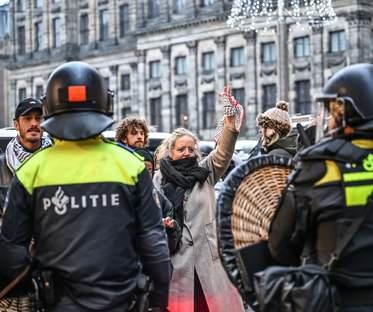
Anne Hidalgo and Emanuel Macron then postponed their plans to take a dip, citing political reasons, possibly hinting at the election that had been approaching at the time They did end up swimming on July 17th, although the mass protest did not happen on June 23 or July 17, nor any other day It is unclear whether the protest is still going to go on or whether because of the postponing of Hidalgo and Macron’s swim cancelled everything, although it is most likely that the protest has been cancelled, since there have been no further updates on the subject, and the Olympic Games have ended. However, the website is still up with the countdown and all, and one thing to note is that Mayor Hidalgo and other Paris officials have stated that the Seine will supposedly be able to swim in for all members of the public even after the Olympics and 101 years of being illegal to swim in.
Year 10 Depth Study Exemplar

A depth study is an investigation that allows students to delve into a scientific concept more deeply, offering a learning experience distinct from traditional classroom methods. This type of study enables students to choose a question or topic of personal interest, conduct thorough research and design a first-hand experiment to test their question, ultimately leading to a deeper understanding than typically achieved in class.

Serena’s depth study focused on alternative fuel sources for the automotive industry. In addition to conducting extensive research using a variety of reliable and valid secondary sources, she designed a creative yet rigorous experimental method to test her question. This method enabled her to gather accurate data, which she then analysed using mathematical formulas to draw insightful conclusions. Her systematic approach, the quality of both her primary and secondary data and her analytical skills distinguished her depth study as a standout example of scientific inquiry.
CLEOPATRA HHYSTERIA YSTERIA
WHO WAS SHE? WHO WAS SHE?
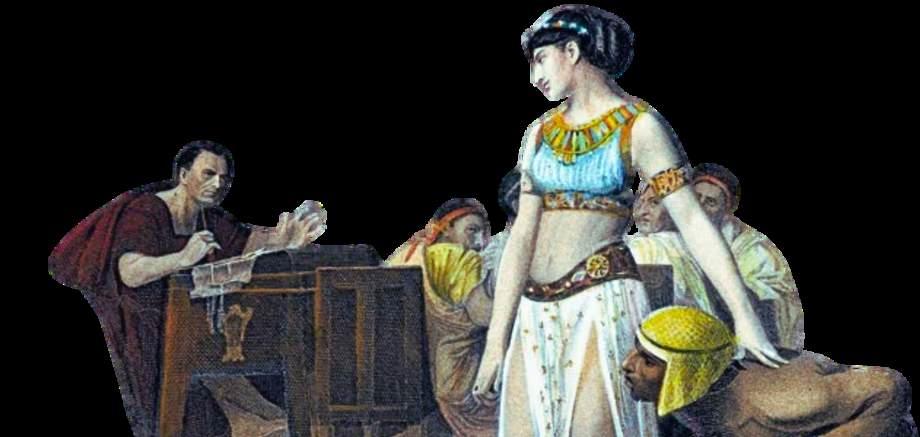
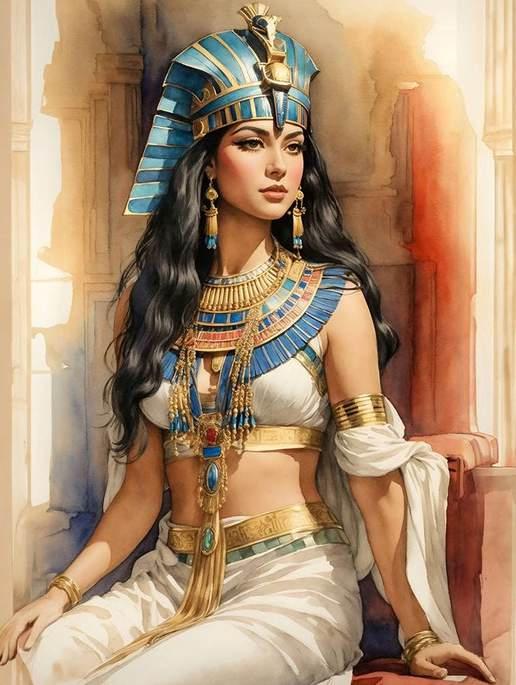
The greatest pharaoh of The greatest pharaoh of hhistory istory
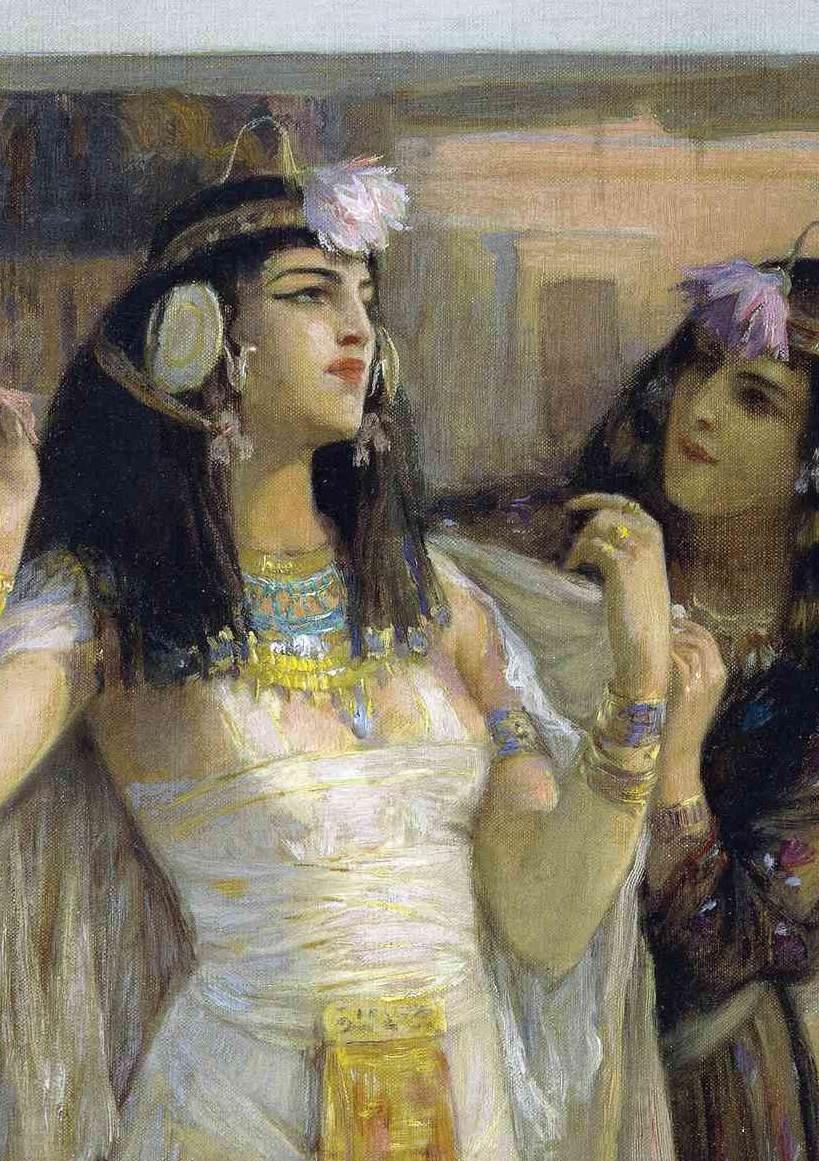
SSignificance ignificance GOOD AND GOOD AND THE BAD.... THE BAD....
oof f tthe he llast ast pharaoh f E t pharaoh f E t


HER INFLUENCE ON HER INFLUENCE ON CURRENT SOCIETY.... CURRENT SOCIETY....
The next few pages are excerpts from the Year 9 elective history magazine focused on Cleopatra
LOVE OR POWER?

By Gabriella Jamal
Ruler of Egypt or ruler of men’s hearts? Was her relationship true love, or purely a facade? Cleopatra and Julius Caesar, the power couple of the Ancient World, but was it love between them or nothing more than a strive for power? There's the saying “age is just a number”, and well Cleopatra clearly understood the term, meeting Julius Caesar when she was 21 and he was 52 She realised after she was overthrown by her younger brother and co-ruler, that she required assistance from one of the most powerful empires at the time, Rome, or more specifically Julius Caesar Talk about a sibling rivalry On the other hand, Julius Caesar was not in the best position himself and was in dire need of money and resources for his soldiers. While he was in the palace of Alexandria, Cleopatra was snuck into the palace in nothing but bed linens to unravel and be revealed to Caesar in his own bedroom! Talk about an entrance! Was it a spark of love, or a recognition of power between them that had the two of them forming an alliance after their night together. Was it Julius Caesar's supposed charm that tamed the wild queen of Egypt, or was it the charms and supposed beauty of Cleopatra that seduced the almighty Roman ruler?
Although not legally married, the pair cruised together along the Nile river, before Ptolemy launched an attack in 47 BC in his rage. He started a civil war and unsurprisingly was no match for the new power couple. With Caesar being a master of strategies and a general himself of none other than the infamous Roman Empire, Cleopatra became queen of Egypt after he was successful in defeating her brother Unfortunately once again Cleopatra was forced to share the throne with another one of her brothers, although a few years later he died unexpectedly As to what happened to him or better yet who happened to him, is still a mystery
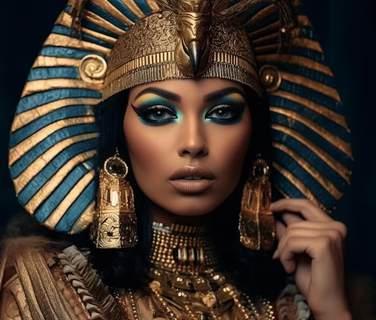
Although not legally married, the pair cruised together along the Nile river, before Ptolemy launched an attack in 47 BC in his rage. He started a civil war and unsurprisingly was no match for the new power couple. With Caesar being a master of strategies and a general himself of none other than the infamous Roman Empire, Cleopatra became queen of Egypt after he was successful in defeating her brother Unfortunately once again Cleopatra was forced to share the throne with another one of her brothers, although a few years later he died unexpectedly As to what happened to him or better yet who happened to him, is still a mystery
As said by historian Barry Strauss,“Cleopatra knew how to keep calm in a crisis ” and she certainly did so when she discovered the assassination of Julius Caesar in 44 BC. Although she was originally in Rome to represent her country’s interests and further develop her relationship with Caesar, she continued to stay in Rome for a month after his death. Despite the “expected” emotions she would have been feeling as a result of C

ancient man would be your boyfriend?
Howmanysiblingsdoyouhave?
a)olives,cheese,honey,andvegetables c)Caesarsalad b)Wildboar&pearlsdissolvedinwine d)Minestronesoup
Whichofthesenameswouldyouthinkaremostsuitedto yourfuturechildren?
a)Julia&Mark c)Marcella&Lucas
b)Alex&Selene d)Jack&Rose
By Sophie Kearney
a)2-Sisters c)2-Oldersisters b)2-Brothers d)0-I’manonlychild
Whatheightisyouridealboyfriend? a)5’9”ft c)5’7”ft b)6ft d)5’11”ft
Take the ultimate personality quiz to find out!
Howmanykids(ifany)areyouplanningtohave?
Ifyougotmostly….. A’s-Octavian/Augustus B’s-MarkAntony C’s-JuliusCaesar D’s-LeonardoDiCaprio(he’sprettyancientnow��)

By Logan Philipiah
ALL HER RELATIONSHIPS WEREN’T AS PERFECT AS WE THOUGHT

People dream of having a perfect life, where everyone loves them. Cleopatra was unfortunately a victim of this, causing a range of new relationships to spark within her lifetime, in her effort for love and support, and this ended up being her greatest strength and weakness at the same time. Some perspectives would say she succeeded in having a range of support and love from Roman generals, some family, and friends. However, some historians, including me, would say this was not true, as one of her negative, battle, and war-causing relationships where she did not receive love and support, ended in her death. That’s a pretty big consequence of unpleasing someone, don’t you think? Our modern day view on her is that Cleopatra was perfect in almost every way We read that all of Cleopatra's relationships including her husbands, lovers, children, friends, and people of Egypt loved her However, this is hardly the case
Although yes, she had some relationships that seemed to be positive, happy, and definitely benefited people (including herself) - not all were, including her relationship with Octavian, later known as Augustus, which ultimately led to the death of Cleopatra and Mark Antony If you didn’t know, Octavian was related to Julius Caesar, as Caesar was his Great Uncle, but Octavian was also named Caesar's adopted son in his will. This would make you think Cleopatra, Mark Antony, and Octavian were the best of friends, right? On the contrary, actually.
Due to Mark Antony and Caesar being good friends, Antony and Octavian did once have a good relationship. They joined with another man called Lepidus (this made The Triumvirate), to ultimately take revenge on the conspirators that killed Caesar. After that, Antony married Octavia, Octavian’s sister, but this didn’t last very long, as Antony fell in love with Cleopatra, and this is where it all went downhill. I’m sure you can imagine how this sparked a civil war between Cleopatra and Mark Antony against Octavian, but it was basically all because of a small detail. Jealousy. Unnecessary if you ask me. According to historian Kayla Mahoney from ‘Museum Hack’, this negative relationship started by Octavian originally viewing Cleopatra as an “evil seductress who used her lady powers to make a traitor out of Antony” This extract reflects how not everyone viewed Cleopatra as a perfect princess (despite her efforts), and maybe how not all her relationships were positive
As mentioned before, this negative relationship between Cleopatra and Octavian led to the death of Mark Antony and Cleopatra, through the Battle of Actium. This battle ultimately started as Antony departed Rome, to be with his newest lover Cleopatra, and he also showed his support for Egypt. Cleopatra and Antony’s romantic and political relationship ultimately led to the extreme jealousy of Octavian and Octavia, resulting in the Battle of Actium. This negative relationship is illustrated in ‘Rome’ the TV series, when Cleopatra is about to die, and she tells Octavian that he has “a rotten soul”. This reflects their hate towards each other, and how she must have died, still holding a grudge.

After Cleopatra and Mark Antony lost, Octavian gained all control of Egypt and Rome, and this followed in the end of a romantic relationship and one of the greatest love stories of that time, between Cleopatra and Antony, as they both committed suicide. So, how does this help us understand who
the real Cleopatra really was? Well, it helps the 21st century's understanding of maybe she wasn’t as perfect as we thought. Maybe, not all her relationships were perfect and happy Or maybe, she didn’t love everyone, nor did everyone love her -
By Logan Philipiah
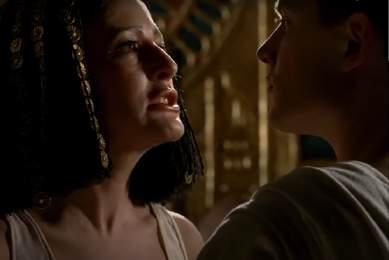
According to Britannica, Plutarch wrote that "For her (Cleopatra) beauty, as we are told, was in itself not altogether incomparable, nor such as to strike those who saw her.” but then wrote that she had “irresistible charm.” And Cleopatra used her charm and beauty, as well as her great intelligence to get what she wanted and required. An example of this is how she had several affairs with Roman leaders not only because of love, but also for her political desires.
Cleopatra’s relationship with Julius Caesar was honestly quite a scandalous one, as the 40-ish year old Caesar already had 3 wives yet no heir. So when the young Cleopatra seduced Caesar to gain support and win back to the throne, according to an article by History Extra, a lot of people, including her brotherhusband, were quite furious from the relationship. But that didn’t matter, as Cleopatra was soon secure on the throne of Egypt once again, with the military and financial support of a massive empire behind her. Later,
Cleopatra gave birth to Caesar’s child, which caused quite a scandal, as Caesar did not have any children of his own, which caused problems for Augustus, the heir to Caesar’s rule. All of this demonstrates Cleopatra’s scheming nature to get what she wanted, such as the military support from Rome to get back her throne.
The relationship between Cleopatra and Mark Antony is quite a famous one, with a whole Shakespearean play written about their affair. But the story was more than just love and romance, as both Cleopatra and Antony needed each other's help for their personal agendas. Cleopatra desired the assassination of her rebellious sister Arsinoe, who previously tried to claim the throne of Egypt, and because she was loved by people, she posed a threat to Cleopatra’s rule. In the end, she got what she wanted and Antony as well, requiring Egypt’s financial support for his battles which he ultimately got. In the end, even though her relationships did have love and romance in its foundation, Cleopatra’s affairs always had hidden agendas within them to help get what she wanted and needed for her country, making her a great politician.
-Anna K

Strengthsand Weaknesses
Cleopatrawasknowntohaveto stronglinguisticskills havingthe capabilitytospeakmorethenone language.This notonlygaveherthe capabilitytospeakmorethenone languageandbeingableto communicatebetweentwogroups, butitallowedhertoadministerher ruleeffectivelyoverEgypt’sdiverse population.
AlthoughCleopatraisyettobe ignorantimpatientandignorant.This whenthetwomenfellinlovewithher becauseofherstrength,theydidn’t reallyrespectedherstrengths.
Significance
Duringherhistoricalsignificance, CleopatrahasbeeninfluencedintoRoman politics,formingpowerfulallianceswith JuliusCaesarandMarkAntony.Shewas significantintoembracingEgyptian customsandreligionsandbeingthefirst PtolemaicrulertolearnEgyptianandmany otherlanguages,showingherdedication. Herreignwasmarkedbypoliticalintrigue, romanticscandals,andmilitaryconvicts. Thereforemanyofheraccomplishments andtheimpactsshemadeonthehistory world, remainsasafascinatingfigure today.
Shehasmadeawideimpactontheworld weliveinnow. Cleopatrahascontinuedto inspire literatureartsand films,beingthe rolemodelofourgenerationand many others inaworldandtimedominatedby men,recognisedbymanyhistoriansand figuresofourworldshehastakenusallby storm.
AsmentionedbyJoannFletcher “Suchsimplisticportrayalsobscureher truelegacyasastrong,politicallyastute monarch”
Impactontodaysworld
Cleopatrahasgreatlysupported advancementsinScienceandMedicine. Documentedmonetaryreformsupportsthe ancienttraditionthatCleopatrahaswritten treatiesoncoinageandweightmeasures, strengtheninghernationseconomy,the valuewhichwasdeterminedbyCleopatra andnottheweight




Family Family

Ptolemaic Family Causes Calamity!
From Alexander to Absurdity


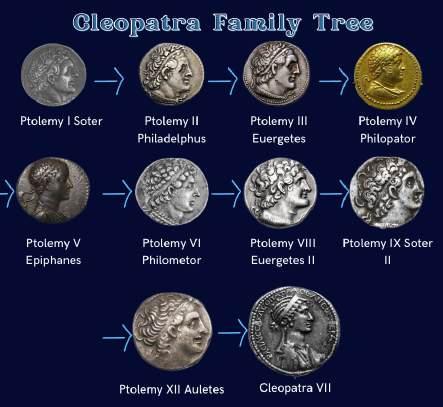
y faced both external threats, such as the growing power of Rome, and internal conflict as siblings contended for the throne. These tensions shaped Cleopatra’s reign and her ability to navigate the rocky waters of both familial and political conflict. Despite being the second eldest daughter, Cleopatra outlived all of her siblings often by eliminating them as rivals in her quest for power.
-By Rylie Wagstaff
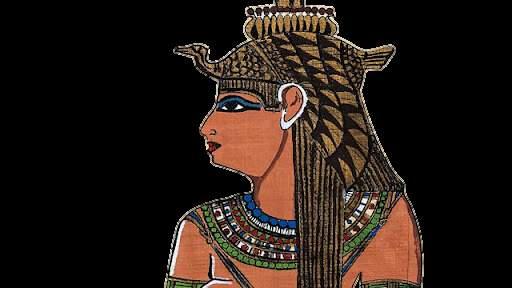

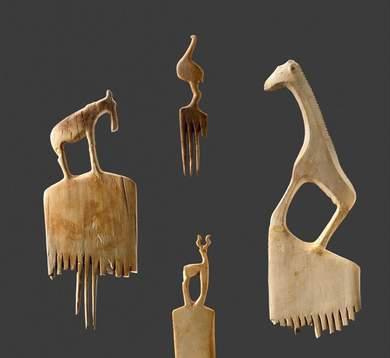


The creation behind the glam!
Cleopatra's Cosmetic Secrets
01. What did it look like?
Cleopatra, the legendary Pharaoh of Ancient Egypt, rocked a makeup look that was totally on point. She was all about bold eyes and a touch of glam Imagine thick, winged eyeliner that stretched up towards her temples, paired with shimmering eyeshadow in shades of green and blue To top it off, she often wore bright red lipstick and sometimes even false eyelashes! So, if you want to channel your inner queen, try experimenting with bold eye makeup and a vibrant lip colour.
02. Anyone else follow the diva?
From the earliest era of the Egyptian empire, many people beside Cleopatra in ancient Egypt wore makeup It wasn't just for women; men also used cosmetics to look their best! Egyptians believed that makeup could help them look younger, more beautiful and even protect themselves from the harsh sun.
03. So, why even wear makeup?
Beauty: They believed that makeup made them look more attractive and youthful.
Religion: Makeup was often used in religious rituals and ceremonies.
Status: Makeup was a sign of wealth and social status. Only the rich could afford the expensive ingredients.
Protection: Some makeup, like kohl eyeliner, was thought to protect the eyes from infections and the sun.
Ancient Egyptians were all about the glam! They used a lot of natural ingredients like kohl, galena (for eyeliner) and lapis lazuli (eye shadow) to create their looks. They used eyeshadows in bright colours like green, blue and purple. And for a touch of colour on their cheeks, they used a blush made from red ochre. Egyptians were all about natural beauty, but they also loved to experiment with different looks. Ancient Egyptians were basically the original beauty gurus!
Ugh, what’s the big deal behind this beauty guru anyways?
In ancient Egypt, makeup was more than just a beauty trend; it was a way of life It held deep cultural and religious significance. Makeup in ancient Egypt was not just a cosmetic product; it was a complex and important aspect of Egyptian society It held significance in terms of social status, religion, health and cultural identity

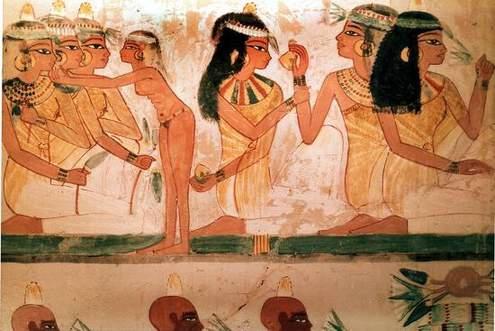
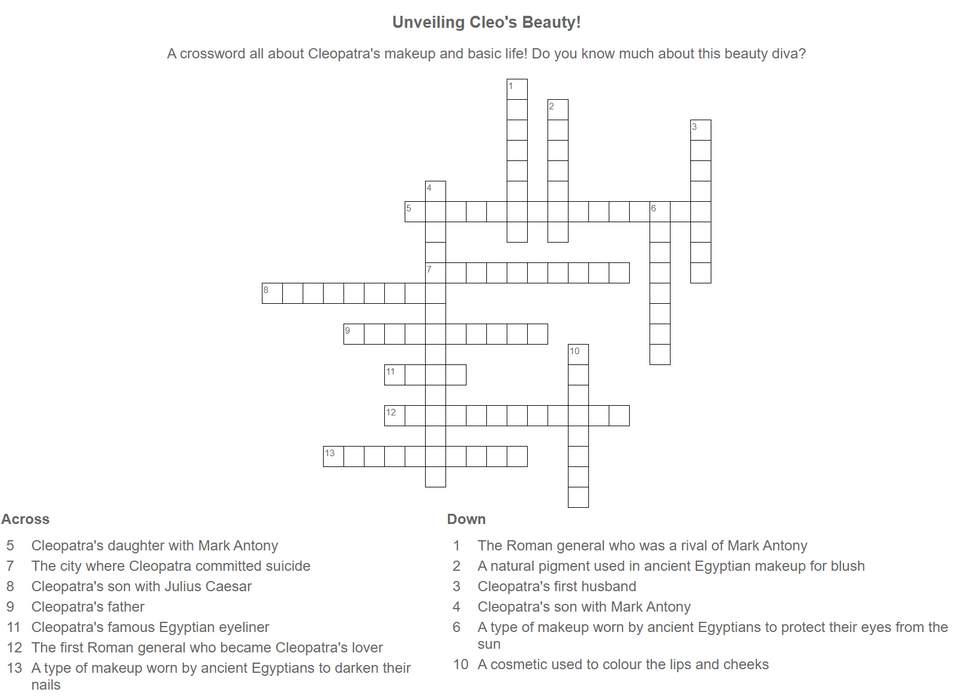

UNDERSTANDING THE UNIVERSE
By Katarina S D
The universe is a rapidly expanding mystery, with millions of astronomical objects that continue to confuse and amaze people. From weird planets to unusually small burning hot star cores, these are justafewofthewildestfactsandtheoriesaboutspace.
Aneutronstaristheproductofacollapsedcoreofastararound1-3solarmasses(asolarmassisaunitof measurementthatisequivalenttothemassofoneEarthsun[1solarmass=themassoftheSun]).The dyingstar’scorewillcrushtheprotonsandelectronsintoneutrons,whichstopsthecollapse,leaving behindanextremelydenseyetsmallneutronstar.Thesearethesmallestandmostdensetypeofobjectin spacesecondonlytoablackhole,onlyreachingadiameterofapproximately20kilometres.
ThereareseveraltypesofneutronstarsincludingMagnetarsandPulsars: Magnetarsareneutronstarswithincrediblypowerfulmagneticfields, aboutatrilliontimesmoremagneticrelativetotheSunandEarth. Pulsars aredifferenttomagnetarssincetheynotonlyhaveastrongmagneticfield, buttheyexpellpulsesofvisiblelight,X-raysorgammaraysfromtheir northandsoulpoles.Pulsarsemitimmensepulsesofradiationevery second,withthesmallesttimebetweenpulsesbeing1millisecond.



TheWormholeTheoryofBlackandWhiteHoles
Thewormholetheorystatesthatifsomethingistravellingbeyondlight speed,itcantravelthroughapassageoftimeortunnelconnectinga blackholeandtheorised,whitehole.Ablackholeisacelestialobject wheregravityissointensethatnomatterorlightcanescape,whilea whiteholeisthetheorisedoppositeofablackhole,whereitrejectsall matterandnothingcanenterduetoitsextremegravity.Thetheory raisesquestionsaroundthepossibilityoftravellingbeyondlightspeed, whatcouldhaveenoughenergytodosoandgivesfurtherexplanation ofthenatureofblackholes.
Possibilityoftravellingbeyondlightspeedandwhatcouldtheoreticallydoso(PhysicsTheories) Ourcurrentunderstandingofphysicsshowsthatnothingcanexceedthespeedoflight,accordingtothe theoryofrelativitybyAlbertEinstein,whichstatesthatnomaterialobjectcanreachthespeedoflightdue tothelackofenergyrequiredtodoso.Although,therearesomehypothesisedparticlesthatcouldtravel beyondlightspeed;tachyons.Theseweightlessparticlesarehypothesisedtobeconstantlytravellingfaster thanthespeedoflight,however,theyareinconsistentwithcausality.Theprinciplethatstatesthatcause comesbeforeeffect,andEinstein’sTheoryofRelativity.
NatureofBlackholes
Thecurrentnatureofblackholesisthatmattercaughtintheeventhorizonorthepointofnoreturn,will berippedapartdowntothesubatomiclevel(protons,electronsandneutrons)andsqueezedintothe singularityinthemiddleoftheblackhole.Althoughifthewormholetheorywasproven,thenitwouldbe alteredslightly.Themattercrushedintheblackholewouldtravelthroughthepassageoftimebetweenit andthewhitehole,whichwouldthenexpelallthesubatomicparticlesratherthanitbeingsquishedintoa singularity,transportingthematterbetweenuniversesorgalaxiesinsteadofcompressingitintothe singularity.
Odd Planets
Throughout the observable universe, scientists have discovered several weird and fascinating planets with environments vastly different from the ones in our solar system. Planets with ice even at scorching temperatures, planets that rain molten glass or even ones that rival Saturn’ s rings. Here are three of the odd planets in our universe.
J1407B or nicknamed ‘Super Saturn’ is a planet 433.8 light years away from Earth, 20 times the size of Saturn with an impressive ring system. With 30 rings approximately 200 times larger than Saturn’ s, J1407B’ s rings stretch across 180 million km, further than the distance between the Earth and the Sun which is 150.6 million km.



Another odd planet is Gliese 436-B. Much closer compared to Super Saturn, only being 33 light years away. Approximately the size of Neptune, this planet orbits its star extremely close, only taking 2.6 days to complete its orbit. Due to the close orbit, Gliese 436-B has an extremely hot temperatures of 439°C and very high pressures, causing the water molecules on the surface to be compressed into burning or hot ice which is what it is known for.
The last odd planet is HD 189773b also known as a ‘nightmare planet’ is a gas giant slightly bigger compared to Juptier, orbiting its star within 2.2 days. The planet is only 63 light years away from Earth, the second closest of the three odd planets. The nightmarish element of this planet is the rain. On HD 189773b, it rains molten glass horizontally because of its orbit, at high winds of 5,400 mph, 1350-1800 times the average wind speed on Earth (3-4 mph). J1407B, Gliese 436-B and HD 189773b are just three of the many weird and interesting planets within the Milky Way galaxy with fascinating features and extreme conditions.


By Zi Kei
An Introduction to Phobias
Fear- a primal instinct that helped our ancestors survive But what happens when fear becomes irrational? That’s where phobias come in—quirky fears that grip our minds and hearts Imagine trembling at the sight of a harmless spider or sweating in an elevator as it escalates higher and higher These are phobias But why do we have these irrational terrors?
Our brains play a vital role When we face danger, the amygdala (our brain’s alarm system) goes wild It’s like a smoke detector overreacting to a hint of smoke coming from your kitchen Usually, it keeps us safe, but sometimes it misfires Everyday things trigger anxiety as if they’re mortal threats.
What are some common phobias?
Common phobias include:
acrophobia: fear of heights
aerophobia: fear of water

claustrophobia: fear of enclosed spaces
coulrophobia: fear of clowns
glossophobia: fear of public speaking
hemophobia: fear of blood
zoophobia: fear of animals.

Fear of animals (zoophobia) also has specific phobias associated with particular animals, such as:
ailurophobia: fear of cats
arachnophobia: fear of spiders cynophobia: fear of dogs
entomophobia: fear of insects
musophobia: fear of mice/rats
ophidiophobia: fear of snakes
ornithophobia: fear of birds
spheksophobia: fear of wasps
ichthyophobia: fear of fish
Fear of animals (zoophobia) also has specific phobias associated with particular animals, s
ailurophobia: fear of cats
arachnophobia: fear of spiders
cynophobia: fear of dogs
entomophobia: fear of insects
musophobia: fear of mice/rats
ophidiophobia: fear of snakes
ornithophobia: fear of birds
spheksophobia: fear of wasps
ichthyophobia: fear of fish
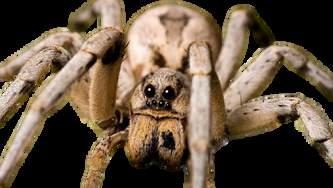
The longest phobia word: Hippopotomonstrosesquippedaliophobia: fear o
Phobia Help
Phobias are normal and completely fine. Phobias are also treatable! Seek professional help or guidance if needed
You can use the Australia-wide Find a Psychologist service or call 1800 333 497
If you have a family member or friend with phobias and you want to help them go to https://www mind org uk/information-support/types-of-mental-healthproblems/phobias/for-friends-family

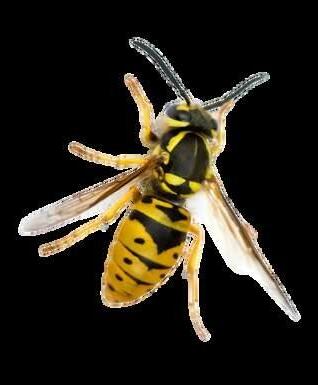
RIVERSIDE ESCAPES

This year Stream reporters decided to take to the streets and see what people wanted In this article, we offered students a choice of an ocean view villa or a jungle view villa in Bali and the results are telling!
The majority of students chose the ocean view villa beating the jungle in both the science lawn and the quad. We at the Stream have many theories why this is the case but the most popular was that as our school is on the riverside, we have a naturally affinity to the ocean Another popular theory in the Editors room was that jungles are full of insects and we all hate getting bit - not to mention the higher risk of malaria
There is no deny that the ocean is very calming, it symbolises peace and the realm of being one with your emotions Being a student can be chaotic, so its no surprise that we all wanted to chill out more! The students may also prefer the ocean view because it is familiar to them as Sydney has many beautiful beaches
More seniors hang out at the science lawn, and more juniors hang out in the quad Thus, there is a slight difference in the results between these two playground destinations It seems that there is a slightly higher preference for the Ocean view between the seniors vs juniors as despite the overall vote for seniors being smaller they were 5x more likely to prefer the ocean view over the jungle view This might be because it represents calm and it is a nice way to get away from their busy lives and be peaceful while the HSC might be them out
That being said, the results from the quad are probably a better representation of the overall students because there were way more stickers on that poster compared than the one that was in the science lawn Despite all this, there is no denying that if we were to go to Bali next year, we would be lucky to stay at either villa
If any parents are reading this, here is hoping you listen

What YOU Need to Know About Skin Cancer
A Note: This article is not medical advice. It is an informative piece.
BY GRACE SUSANTO
Skin cancer is the uncontrollable growth of abnormal skin cells. According to the Cancer Council, “Skin cancer occurs when skin cells are damaged, for example, by overexposure to ultraviolet (UV) radiation from the sun.” Specifically, it occurs when the DNA, which contains the genetic code telling the cells what to do, is damaged, thereby resulting in the rapid growth of abnormal cells, which often spread and influence otherwise healthy cells. Skin cancer is categorised into three main types which are:

Basal cell carcinoma (BCC): This is a type of skin cancer that begins in the basal cells which produce new skin cells as old ones die off. They are found at the bottom of the epidermis, which is found at the bottom of the epidermis, which is the outermost layer of the skin.
Squamous cell carcinoma (SCC): Squamous cell carcinoma is a type of skin cancer that starts as a growth of cells on the skin. It is the second most common type of skin cancer, with the most common being basal cell carcinoma. This is also known as cutaneous squamous cell carcinoma, with the term “cutaneous” identifying it as a skin cancer and differentiating it from other types of cancers that may arise inside the body. This occurs when exposure to UV radiation or other harmful substances cause DNA damage to squamous cells, which are those located near the surface of the skin that shed continuously as new ones form.
Melanoma: This type of skin cancer is considered the most dangerous of the three main types. It starts in the melanocytes, which are the cells that produce melanin, which is the pigment that gives skin its colour.
Compared to other countries, Australia has a much higher incidence rate of skin cancer, with about 2 of 3 Australians predicted to be diagnosed with some form of skin cancer before age 70. This is due to the damaged ozone layer in the stratosphere. The purpose of the ozone layer is to shield humans and other living organisms from harmful ultraviolet rays from the Sun. The damage to the ozone layer has compromised its ability to protect organisms from UV rays, contributing to the high levels of skin cancer in Australia. According to the Cancer Council, exposure to UV radiation causes 95% of melanomas.

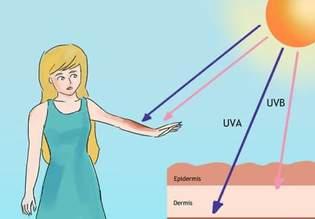
Skin cancer isn’t just something you hear about on the news. It’s a real danger that ends lives. It kills approximately 2000 Australians each year and this rate has been steadily rising.
Although all individuals are at risk of skin cancer, especially due to the high levels of UV radiation in Australia, some Australians are at higher risk, including people who have:
A family history of skin cancer
Had a previous skin cancer, including melanoma
Fair or freckled skin, especially those with skin that burns easily
Red or fair hair and light-coloured eyes (blue or green)
Lots of moles on their body
Worked or currently work outdoors
Had short, intense periods of exposure to UV radiation
Actively tanned or used solariums
A weakened immune system
Certain skin conditions, including sunspots.

People at a higher risk of skin cancer should also discuss a plan of how often to check their skin with their doctor in order to prevent skin cancer. According to the Cancer Council, “A full skin examination, supported with photography and dermoscopy, may be necessary every six months”.
Although skin cancer can be fatal if detected late, the good news is that with early detection, it has a high survival rate and is easily treatable. Skin cancer can be treated through the use of surgery, chemotherapy and/or radiation, although treatments may vary depending on the type of skin cancer and the extent to which it has progressed.
The most effective and simple way to prevent skin cancer is to apply sunscreen with an SPF level of at least 30. It is important to apply sunscreen at least 20 minutes before being exposed to ultraviolet radiation. It is also recommended that you perform regular self examinations for any abnormalities in the skin and see a doctor if you notice any new spots or changes to moles.
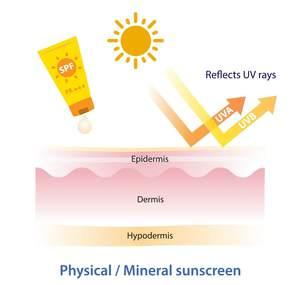
By Isabela and Zi Kei








SAGITTARIUS
Nov 22 - Dec 20
Saturn flows tightly through Sagittarius this year, grounding our adventurous spirits to a halt. This is a year for quiet reflection in order to build on the lessons from past mistakes.
CAPRICORN
Dec 21 - Jan 19
The Suns rays on Capricorn, encourages steady work Reward yourself for consistent effort. Celebrate small wins as you build toward your bigger goals
AQUARIUS
Jan 20 - Feb 18
Pluto in Aquarius sparks innovation and brings transformation embrace new ideas and reshape your academic journey with a clear plan
PISCES
Feb 19 - March 19
SCORPIO
Oct 23 - Nov 21
Pluto passes Scorpio this year, transforming your academic path and heightening intuition embrace new ideas, but stay grounded in practical steps
In Your Stars 2025
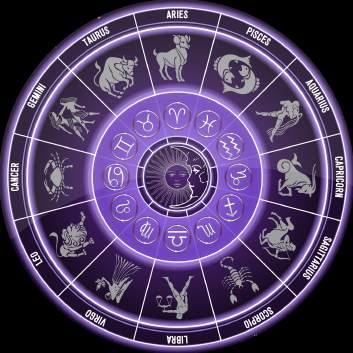
Neptune in Pisces fuels creativity, but Saturn in Pisces calls for structure Trust your intuition, but balance it with practical discipline for the best results
ARIES
Mar 20 - Apr 19
As Mars passes Aries your drive will be fuelled Take bold steps in academics and leadership. Organise your efforts for lasting success
TAURUS
Apr 20 - May 19
The moon ’ s eye is in Taurus bringing steady focus and expanding your opportunities balance work with self-care for growth
LIBRA
Sep 23 - Oct 22
Venus in Retrograde invites you to reassess the strengths of your friendship Balance social time with focused study.
VIRGO
Aug 23 - Sep 22
Virgos Full Moon highlights perfectionism and requires discipline. Focus on details, but don’t get stuck in perfectionism small wins add up.
LEO
Jul 22 - Aug 22
The Sun in Leo gives confidence to lead. Venus Retrograde will prompt reflection on friendships Use it to strengthen connections without big decisions
CANCER
Jun 21- Jul 21
Jupiter is in Cancers shadow - boosting your growth and inspiring change Embrace leadership, but avoid overextending yourself.
GEMINI
May 20 - Jun 20
Mercury in Retrograde may bring miscommunication, but it’s great for group work Stay focused on clear, thoughtful collaboration.


















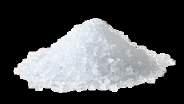






Year 10 Creative Writing Exemplar

This next story is the perfect example of creative writing. Students were tasked with creating an an original creative piece which drew on Charles Dickens's character of Miss Havisham from Great Expectations.
Miss Havisham sat in the heavy silence of her room, staring blankly at the mirror across from her bed. The reflection that stared back was that of a woman she no longer recognised. Shrunken. Hollow. A figure consumed by time. A wedding dress hung off her frail frame like a ghost of the life she had never seen.
For years, Satis House had stood as a tomb, its walls containing the fragments of a future that had died long ago. The windows were covered, the clocks stopped, and each room sat undisturbed, suspended in a world that had moved on without her. Tonight, however, something was different.
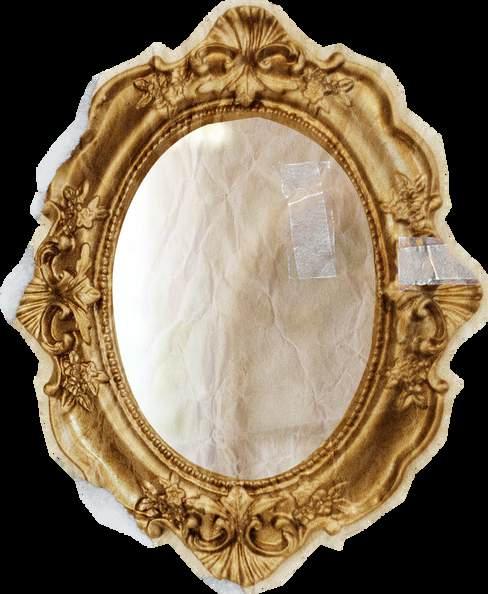
As she sat there, something caught her eye, a glow, faint but unmistakable, seeped in from under a door, beckoning her. Miss Havisham rose from her chair and approached the door cautiously, reaching out to open it with hesitation. With her thin, frail hands she pushed open the heavy wooden door. The door creaked slowly, its hinges groaning in protest as it swung inward, revealing a hallway. The hallway stretched before her, filled with the golden light. At the end of the corridor, she saw something impossible- a figure, standing still as if waiting.
She gasped. The figure was dressed in a gown crafted from rich, flowing satin and intricate lace, all in a pristine white. It was holding a bouquet of bridal flowers, the blooms as pure as her attire, their subtle fragrance lingering in the air. Sparkling bright jewels adorned her neck and wrists, catching the light with every movement. A long delicate almost transparent veil cascaded down her back, trailing behind her. The figure wore the veil she had once worn - the lace untouched by dust or moths.
Dressed in white, like she had been years ago. But the figure’s form was clearer, sharper and untouched by the decay of time. Slowly, cautiously, Miss Havisham stepped forward. Her feet, usually dragging in sluggish resignation, moved with a strange, unfamiliar energy.
As she approached the figure, her heart began to pound in her chest - an uncomfortable, almost alien feeling.
“Who are you?” she croaked, her voice echoing through the still air.
The figure did not turn, but its voice was soft, melodic, like a song from a dream. “You know who I am.“
Miss Havisham’s hand flew to her chest, a sudden pang of fear and recognition settling in her bones. The figure began to walk, gliding down the stairs with a grace Miss Havisham hadn’t possessed in decades.
“Wait!” she called out, panic rising as she realised the figure was leading her into the grand ballroom, the place she had forbidden herself to enter for years. But the figure did not wait.
When Miss Havisham reached the threshold of the ballroom, she hesitated. The door was already open and the light inside was blinding. Golden, almost heavenly, a direct contrast to the gloom that had long swallowed the house. She stepped inside, drawn by some force beyond her will.
The ballroom was untouched by time. The chandeliers sparkled as they had on the day of her wedding preparations, the tables gleamed with fresh linen, the glasses stood filled with wine. But there was no music. No guests. No joy.
In the centre of the room stood the bride. Miss Havisham gasped. The figure had removed her veil now and Miss Havisham saw her face - her own face, youthful and glowing, eyes filled with hope. The woman in white looked at her and Miss Havisham felt the pull of a memory long buried beneath layers of bitterness and pain.
“Why have you brought me here?” Miss Havisham asked, her voice trembling.
Year 10 Creative Writing Exemplar

The young bride smiled, but it was a sad, knowing smile, “I didn’t bring you. You brought yourself.”
The words sent a chill down Miss Havisham’s spine. She took a step forward, staring at the vibrant, hopeful version of herself, unable to look away.
“Do you not remember?” the bride asked, stepping toward her. “This was the moment before everything changed. Before the letter arrived. Before you decided to stop living.” Miss Havisham closed her eyes. She remembered that moment well - the last moment she had felt like herself. The moment before the world had betrayed her.
“I had no choice,” she whispered, her voice filled with sorrow. “He left me. He destroyed me.” The bride shook her head, the light dimming around them. “No, you destroyed yourself, Havisham.”
Miss Havisham opened her eyes, anger flaring from within her. “You don’t understand! He took everything from me!” But the bride, her younger self, only sighed. “You gave him your power. You let one moment define your entire existence.”
Suddenly, the ballroom began to flicker, the light fading, and Miss Havisham saw the truth beneath the illusion. The once beautiful room began to rot before her eyes. The walls crumbled, the tables sagged under the weight of decay, the chandeliers cracked and fell. The bride began to disintegrate, her white dress turning to ash.
“No!” Miss Havisham cried, reaching out. “Don't leave me!”
The younger version of herself smiled one last time. “I never left, Havisham. I’ve been here all along.” And with that, the bride was gone, leaving Miss Havisham alone in the ruins of what had once been a dream.
The illusion shattered. The figure had vanished into the darkness, leaving only the quiet hum of the house around her. But the light, the strange beckoning glow still flickered faintly down the corridor, leading somewhere beyond the walls she had hidden behind for so long.
Miss Havisham stood in the wreck of Satis House, her once beautiful home now nothing more than a ruin. The weight of time crashed down upon her and for the first time, she felt it. She felt the years she had wasted, the time she had lost.
Trembling, she turned to leave the ballroom, but as she did, the grand clock in the hallway struck once again.
Its deep chime echoed through the house, and for the first time in decades, Miss Havisham felt the passage of time. For the first time in decades, she realised the house wasn't what had trapped her. It was her grief.
Without looking back, she turned her back on the past, crossed the threshold and stepped into the dimly lit hallway. As she moved away, the house behind her groaned, old and tired, like it knew its time was ending too. And with each step she took, the light grew a little brighter.
Art Exemplars 2024

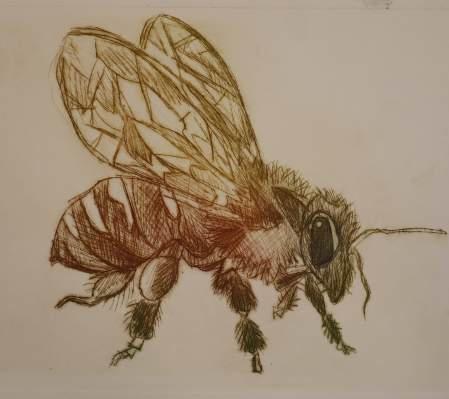
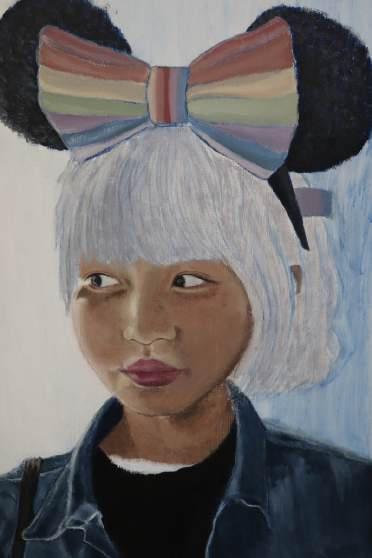




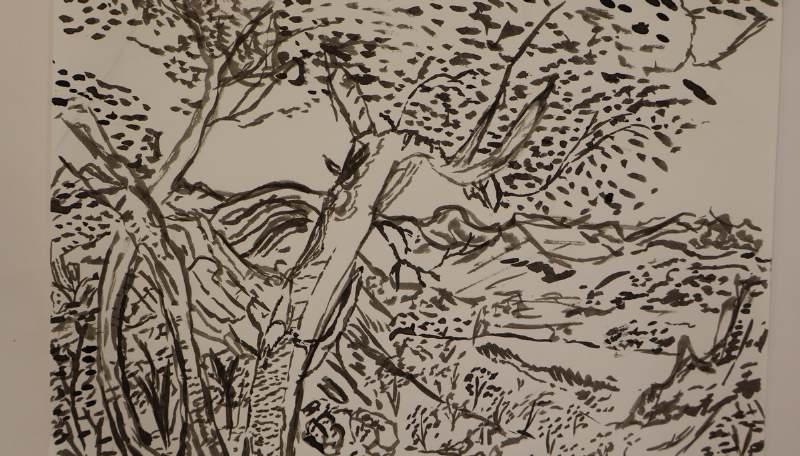



By Sitaresmi Waluyo
SEA ANIMALS octopus
Octopuses can see 360! Their optic nerve fibers route behind the retina and their rectangular pupils help octopuses see in all directions and give them control over how much light they let into their eyes. This helps them protect themselves from predators, In addition, octopuses can see with their skin, images aren’t as clear but it’s still pretty cool. Their skin contains Light-sensitive proteins called opsins enable octopuses to sense changes in light.
wHALES
Sperm whales possess the most asymmetrical skull of any mammal. The unique shape of the skull helps in the effective use of echolocation. Sperm whales use sound waves to locate prey and navigate underwater The asymmetry in their skulls allows for enhanced sound production and reception, enabling them to locate sounds more efficiently. The large, bulbous foreheads of sperm whales contain structures known as "uso" (or "junk"), which are filled with spermaceti, a waxy substance. This structure aids in the production of sound, helping sperm whales to communicate and hunt.

MISSED STORIES ABOUT THE OLYMPICS-
E.COLI & ENTEROCOCCI IN THE SEINE
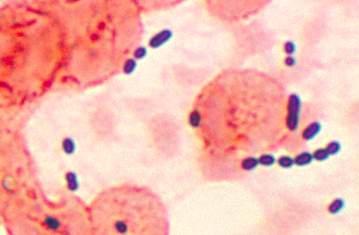
Leading up to the Olympic athletes’ and swimmers' multiple races in the Seine, more and more people have been getting concerned about the sanitary properties and health levels of the Seine It has been banned to swim in the Seine for over a century, and is a very contaminated body of water. Sewage flowing into water treatment plans can get collected by rainwater and flow into the Seine, not to mention the rainwater itself Usually, even some sewage-derived bacteria that has found its way to the Seine can be killed off by ultraviolet rays of sun and higher temperatures, but a rainy, cloudy, and overall gloomy spring has left bacteria to thrive in the Seine. Before the Olympics took place, Paris held a major cleanup of the river, costing €1 4 billion ($2 2b Australian dollars), and being one of Paris’s main pitches for the Olympics. There are questions over its efficiency, though, and some athletes have complained about how the uncertainty of the water quality has affected their preparation.
Some are accusing Paris of only using the Seine for pitching of the games, and to make the Olympics look nice and marketable. Even worse, multiple Olympic athletes and swimmers got sick after Swi-
-mming in the Seine, like Belgium swimmer Claire Michel who was hospitalised after her swim in the Seine one week, Adrien Briffod from Switzerland who fell ill with a stomach bug after his swim, and New Zealand triathletes Hayden Wilde and his teammate who had an E Coli infection for two days after competing in other events held in the river. Claire Michel and Adrien Briffod did not say whether it was an E Coli infection or not, although it certainly did look suspicious to people who were against the water based events being held in the Seine
Different tests were conducted in multiple locations across the Seine to discover the levels of E Coli and Enterococci, the presence of faecal matter in the water, and how much of a risk of disease causing bacteria to be inside the water, which could pose health risks to athletes Eau de Paris’ data showed that high levels of E.Coli bacteria was found in the river at least once during every day of the first week of the Olympics, with only two exceptions
E Coli and Enterococci faecalis are two types of bacteria. E.Coli is usually found in the lower intestine of warm-blooded organisms, most strains are harmless, but some can cause serious illnesses. Enterococcus (or Enterococci) faecalis is also a faecal bacteria, and it is commonly used as an indicator of water quality at public beaches or swimming pools
On the 17th of July, the mayor of Paris, Anne Hidalgo, joined by Tony Estanguet, the President of the Paris Organising Committee of the Olympic and Paralympic Games, took a swim in the Seine in front of many onlookers, even putting their heads under the water, in the hopes of easing the fears on the risk that the bacteria present in the Seine poses However, on the 30th of July, officials postponed a training session for the men ’ s triathlon that was going to be held in the Seine because there were high levels of Enterococci at a certain testing point that exceeded the safety standards set by the World Triathlon




By Olivia Lam
1.
Riddles and Problem Solving
On the next two pages you will find some riddles and problems to solve. The answers are upside down on the last page of the magazine.
What kind of coat is best put on wet?
3.
What has to be broken before you can use it?
4.
2.
What is the end of everything?
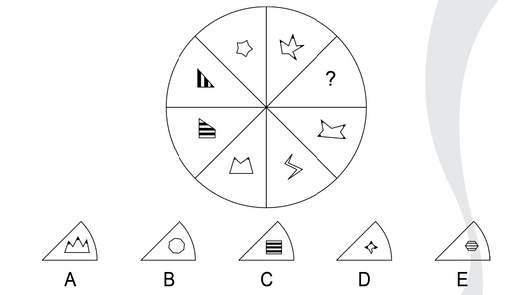
5.
6.
I am a word that begins with the letter “i.” If you add the letter “ a ” to me, I become a new word with a different meaning, but that sounds exactly the same What word am I?


A girl has as many brothers as sisters, but each brother has only half as many brothers as sisters. How many brothers and sisters are there in the family?
9. I speak without a mouth and hear without ears. I have no body, but I come alive with wind. What am I?
By Olivia Lam

By Diana Appleton
